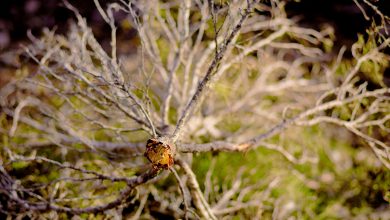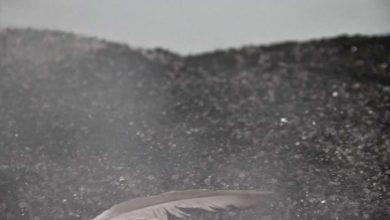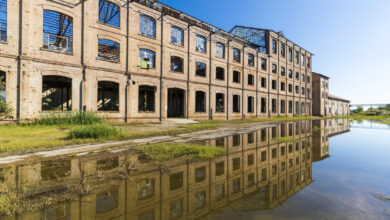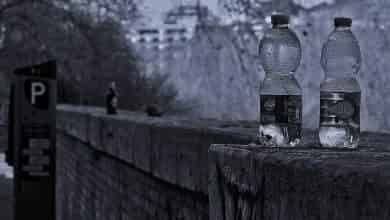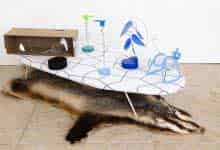
Caribbean Illusion, photo essay by Tommaso Rada
[I]n 1941 in Tuscany nearby a small village named Rosignano, Solvay built a factory for the production of chemical products derived from NaCl. During the years the Solvay group built a new village around the factory.While the extraction site of the salt was and is located in Saline of Volterra, a typical Tuscany smooth hills countryside place, the factory was built in front of the sea. Today the factory cover an area of 2000 hectares, without considering the lands used for mining in Saline of Volterra.
The salt present in the subsoil of Saline of Volterra is extracted using pipes that inject high pressure water that dissolving the salt create a concentrate brine. From Saline of Volterra pipes transport the brine to Rosignano Solvay where it is worked to produce chemical products.
Once the salt is extracted from the subsoil it create cavities that cause the collapsing of the superficial soil modifying the environment and the landscape, even more after the collapsing site become a salt lakes increasing the salinity of the soil and creating problems to agriculture cultures.
In Rosignano Solvay the main visible consequence of the factory action are the beaches in front of the industrial complex; the Solvay factory has a ditch used to release the chemical waste derived from the production of soda; the Calcium Carbonate deposited during the years created white Caribbean beaches. While the Calcium Carbonate is not toxic, other substances wasted in the ditch and consequentially in the sea such as mercury are toxic and extremely dangerous.
According to the estimative of the Italian National Research Council in the seabed in front of the factory have been wasted 337 tons of mercury and other pollution agents; according to Legambiente, an environmental Italian NGO, the tons of mercury wasted are 500 and the pollutant is spread to 14 kms from the shoreline. According to the United Nations Environment Programme the part of the sea and beaches in front of and nearby the Solvay factory are one of the 15th more polluted coast place of the Mediterranean Sea. In 2010 the Solvay group eliminate the mercury from the production cycle but at least 100000 tons of waste are still discharged in the sea. Despite the risk for the human health the beaches are highly frequented by tourist and the beach with the sea got the blue flag.
The Solvay factory was employing 1800 worker until 2004 but today they are only 800; in the factory has been used for long time asbestos to cover the pipes. Today this fact creates at least 2 problems: several workers and former workers are sick of asbestos related diseases and part of the asbestos material was wasted as normal garbage. In Rosignano Solvay the people don’t like to speak about the factory or the risk of pollution, the Solvay group gave jobs for many years and also has a lot of power in the area. In 2013 the Solvay group has been investigated for illegal waste and the industrial group cut a deal with the Italian prosecutors.











Q&A with Tommaso Rada
Photography is
Photography is a way to narrate stories, to show different realities, to learn about unknown situations and finally it is an excuse to feed my curiosity.
Photography and writing:
They are two way of communication that compensates each other. They can walk alone but very often they integrate the gaps each one has.
Who left the biggest impression on you
Of course the people I meet everyday doing my job: very often they surprise me and they leave me wordless.
One of the photographer that inspire me is for sure Eugene Richards with his capacity of tell daily life stories in a personal, intimal and unique way.
Tell us a little about yourself
I started shooting for hobby and it became my profession. I like to narrate daily life story that in my opinion are the ones that very often are untold. In the last years I feel attracted by environmental issues especially the ones that involve directly the people; in fact I think that to sensibilize the public opinion to an environmental issue it is necessary to show its effect on the population.



